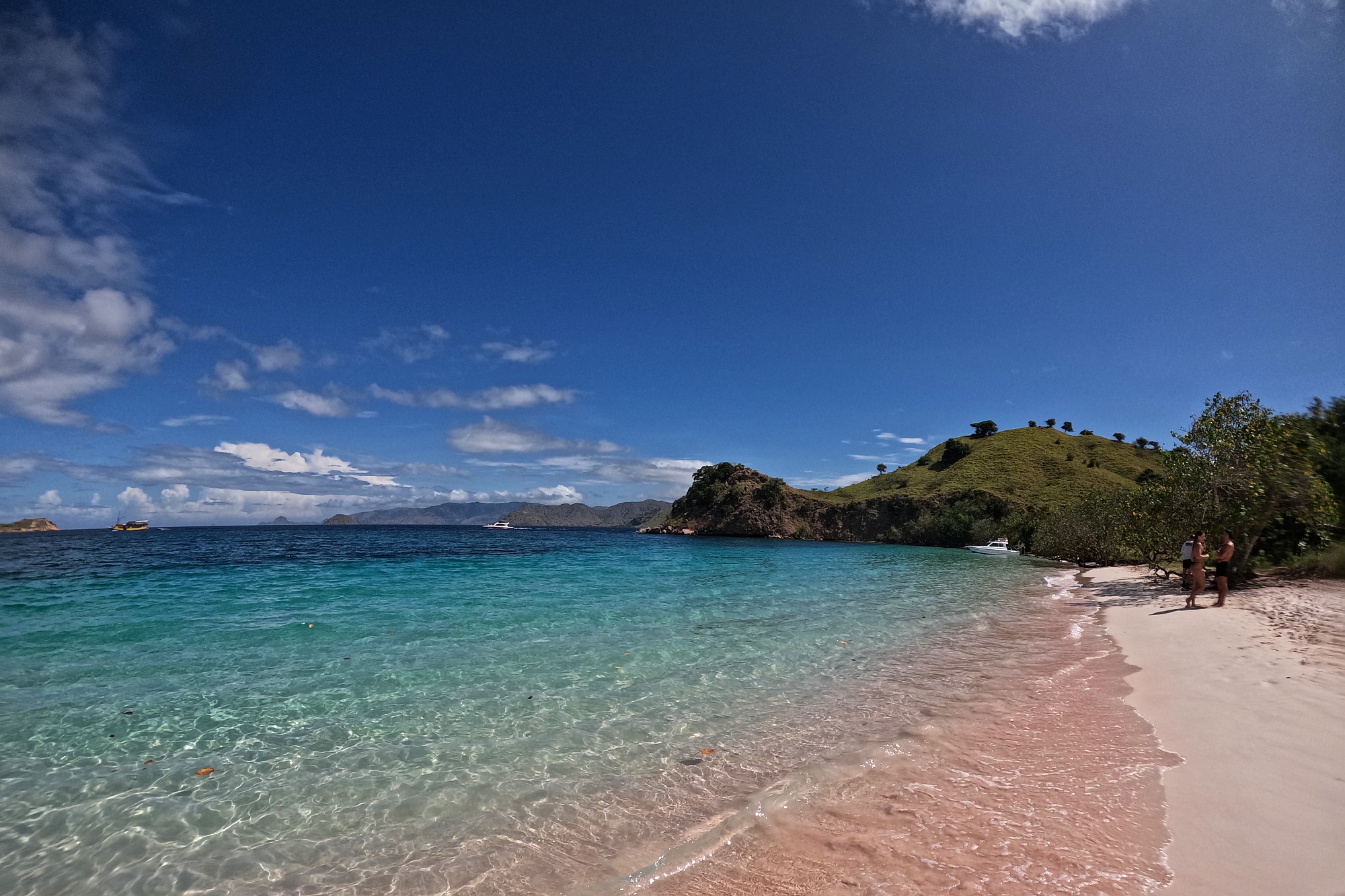The boat cruised to our next destination after our encounter with Komodo. A familiar buzz of the boat’s engine filled the air as we chatted, traded photos, and animatedly relived every thrilling moment. Our next stop: the renowned Pink Beach. You’ve likely seen its breathtaking hue in countless photographs of Komodo National Park, a stunning landscape in its own right. But as we would soon discover, this famous beach also holds another kind of beauty, one that hides just beneath the surface.
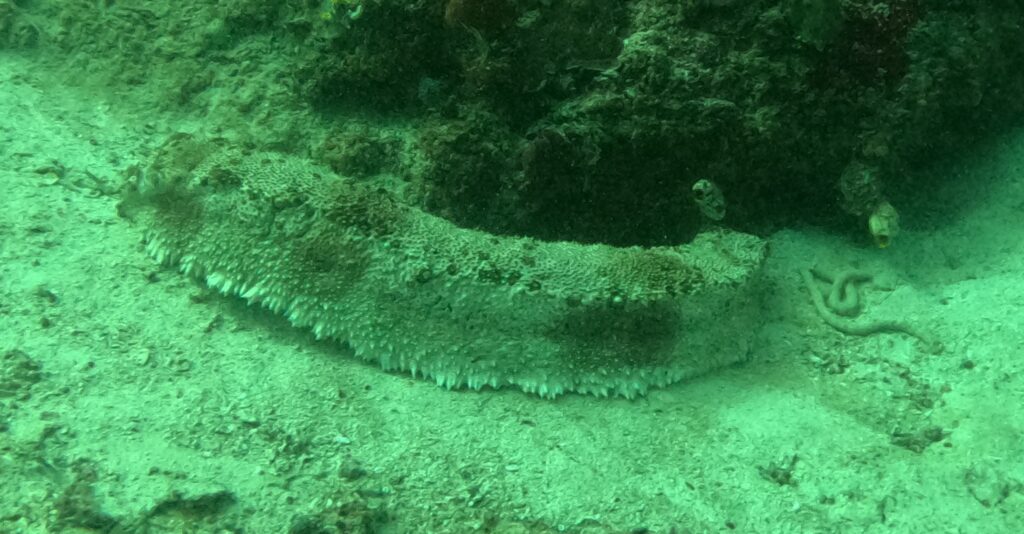
Pink Beach and Taka Makasar
The sea was perfectly calm as we entered the water, and with a gentle splash, we descended beneath the surface. Just a few meters below us, we were immediately greeted by an underwater landscape of hard corals that created a vibrant border along the sandy seafloor. Our guide, Jamal, motioned for us to follow him around a towering boulder that rose from the sand. As we rounded it, he gestured toward a fascinating sight: a sea cucumber as thick as an adult’s arm, its massive body slowly pulsating with every deliberate movement
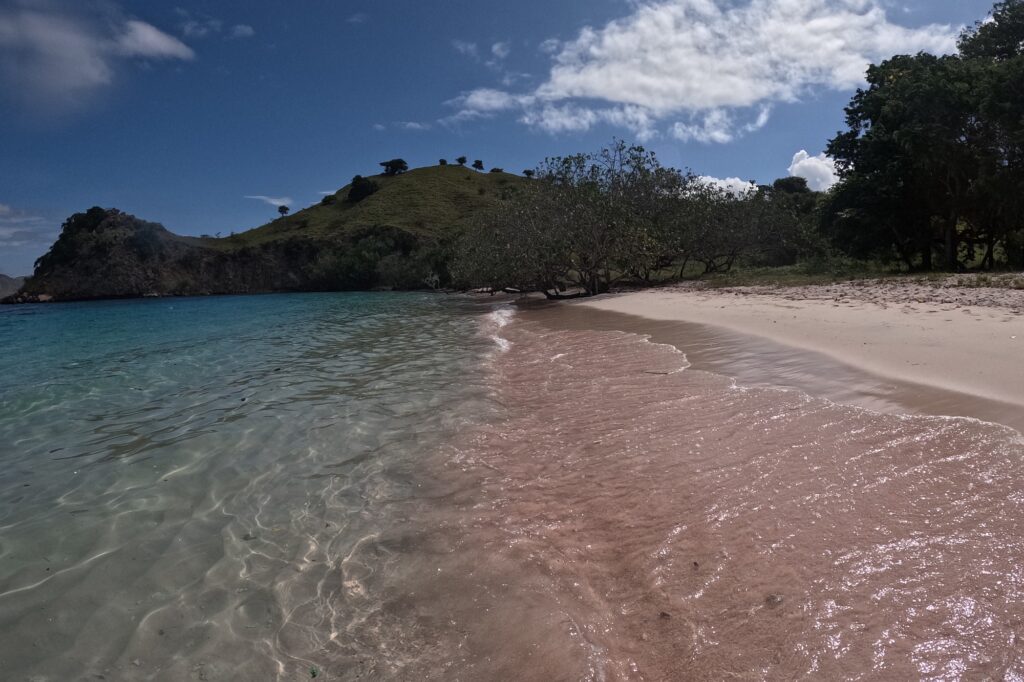
Just before our final ascent, a curious pufferfish swam past, offering a playful farewell. As we broke the surface, we were greeted by a breathtaking contrast: the sky was a brilliant, cloudless blue, the sun’s direct rays a warm embrace. From a distance, a mesmerizing pink hue from the sands radiated toward us, a welcoming beacon to Pink Beach. That unique pink color comes from tiny, microscopic organisms called Foraminifera, whose vibrant red shells mix with the white sand. We flopped onto the soft, grainy shore, peeled off our fins, and simply soaked in the beauty of the light dancing on the shoreline.
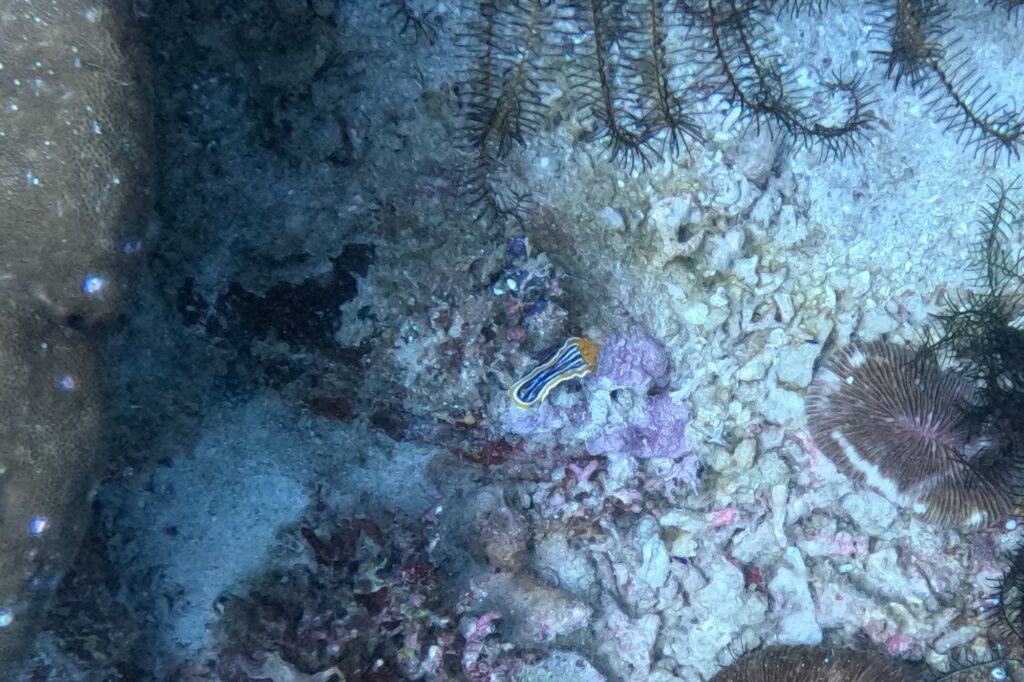
Our second dive proved to be every bit as spectacular as our visit to Pink Beach. We plunged into the water at Taka Makassar, a site more famously known as Manta Point. It earns its name as manta ray encounters are a common occurrence near its natural cleaning station. But while the massive manta rays were the main attraction, the true highlight of the dive was a more serene encounter: simply floating and watching a sea turtle as it quietly foraged for its lunch, completely at peace.
The Night Dive
My final dive of the trip was a night dive at Siaba Besar. I had been anticipating this moment with a mix of excitement and anxiety, as it had been quite a while since my last night dive. But as soon as we descended into the inky blackness, my anxiety was immediately replaced by a profound sense of awe. The underwater world at night was entirely different from its daytime counterpart. Our flashlights illuminated a moray eel, its body slithering gracefully among the coral as it settled into its nightly burrow. When we shifted our lights away and then back, we found its head peeking out from the crevice, its eyes curiously watching our every move. As we drifted on, the beam of my flashlight caught a trumpet fish, swimming in an unusual vertical position, a silent ghost of the reef.
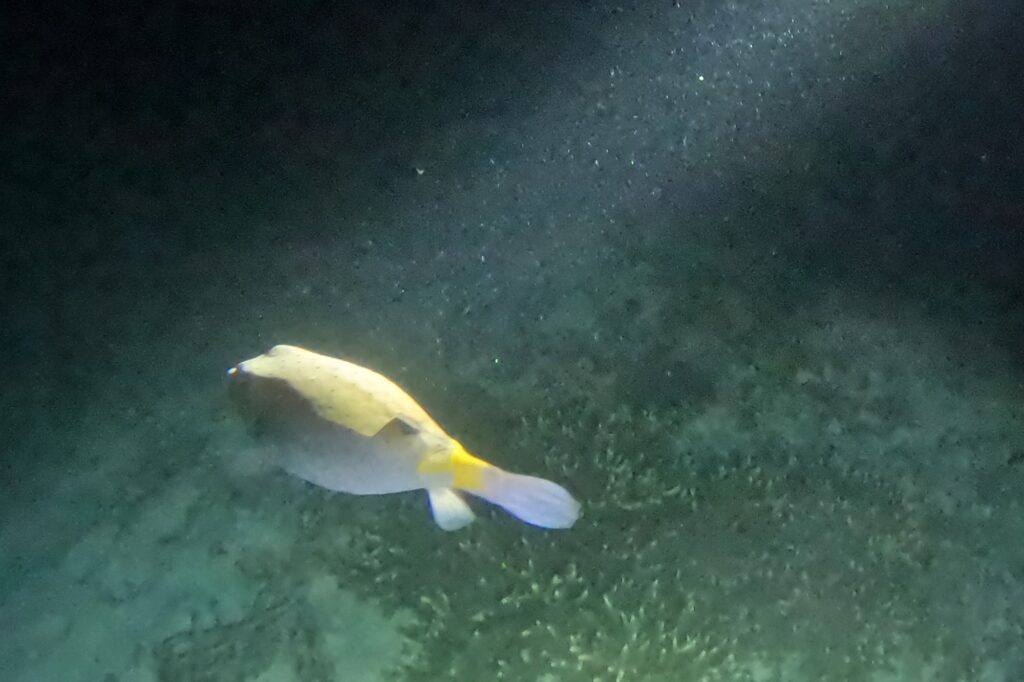
As the sun rose on our final morning, we began our slow sail back to Labuan Bajo. On the deck, we shared a simple final breakfast of fried noodles and fried eggs as the majestic islands of Komodo National Park passed by in the distance. This time, however, our minds were filled with a profound sense of satisfaction, knowing we had witnessed a small part of the world’s truly wild and untouched nature. With a cup of coffee in hand, I simply stared into the distance, wondering when I would be lucky enough to return. I hoped it would be soon.
